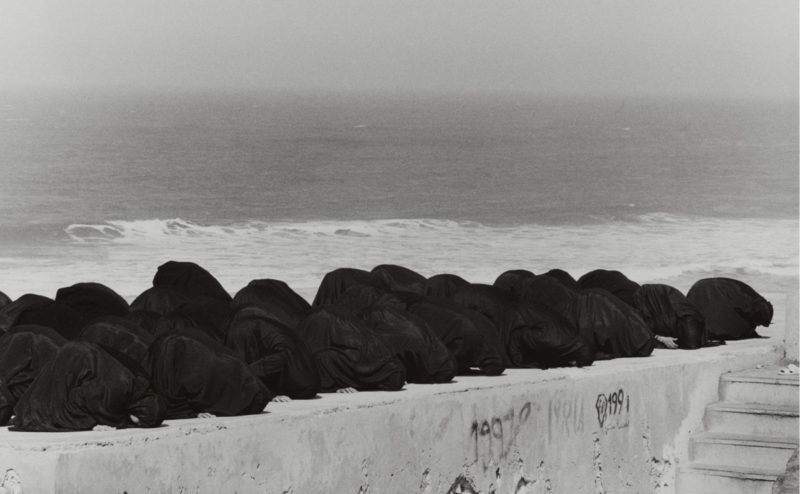
Introduction
Rapture is a projection of black and white video where Iranian 1 artist Shirin Neshat 2 gives a narrative that concerns the differences between Muslim women and men.
Neshat has used the video projection to explore the cultural and social role of women in the Islamic World and shot the work in Morocco with a cast that included hundreds of participants.


What happens in Rapture?
The 13min film is set against a very emotive soundtrack with two groups of people showing side by side. The first group includes identically dressed men who are at a fortress performing mundane activities and elaborate rituals.
The other group shows veiled women in their traditional Islamic attire crossing a desert 3 and acting in movements and gestures that are not tightly prescribed.

One of the features of the highly acclaimed 13-minute video installation is the ability to bring the body expressions of the veiled women despite being covered all over the body. The video also shows a mix of meditative scenes, elegiac scenes, and continuous loops.
At one point, the men roll out their prayer rugs, but they quarrel. On the other hand, as the men navigate a stone building, the women seem to be crying out. However, it is not clear if they are crying out of anger or celebration.

Video excerpt of Rapture
4 min 50 sec
Why was this film made?
Why was this film made?
Neshat brings about ready associations with the gendered spaces and also brings about contrasts. In the case of men, they are entrenched firmly in the authority and tradition of Islam. Women, on the other hand, are protected by Islam but also imprisoned by the chadors or the traditional black veils.


Women & Islam
As you further watch the video, you will find a number of implications of Islam across the set. For example, when a group of six women boards a rowboat and sets to cross the sea, the artist does not let us know what awaits them on the other end. It could be freedom, martyrdom, or redemption.
This ending is also seen as a testament to the bravery and adventurousness of the women. As the men stay within their set boundaries, women are brave enough to look for better things beyond their current limitations.


About Shirin Neshat
Neshat was brought up in Iran but later moved to the United States. Her experiences in both places have shaped most of her work. She says her work does not have any opinions.
She puts herself in the position of asking questions but does not give the answers. The ‘No Position’ enables her to put her audience to critical thinking on the best way to deal with the problems she exposes.








